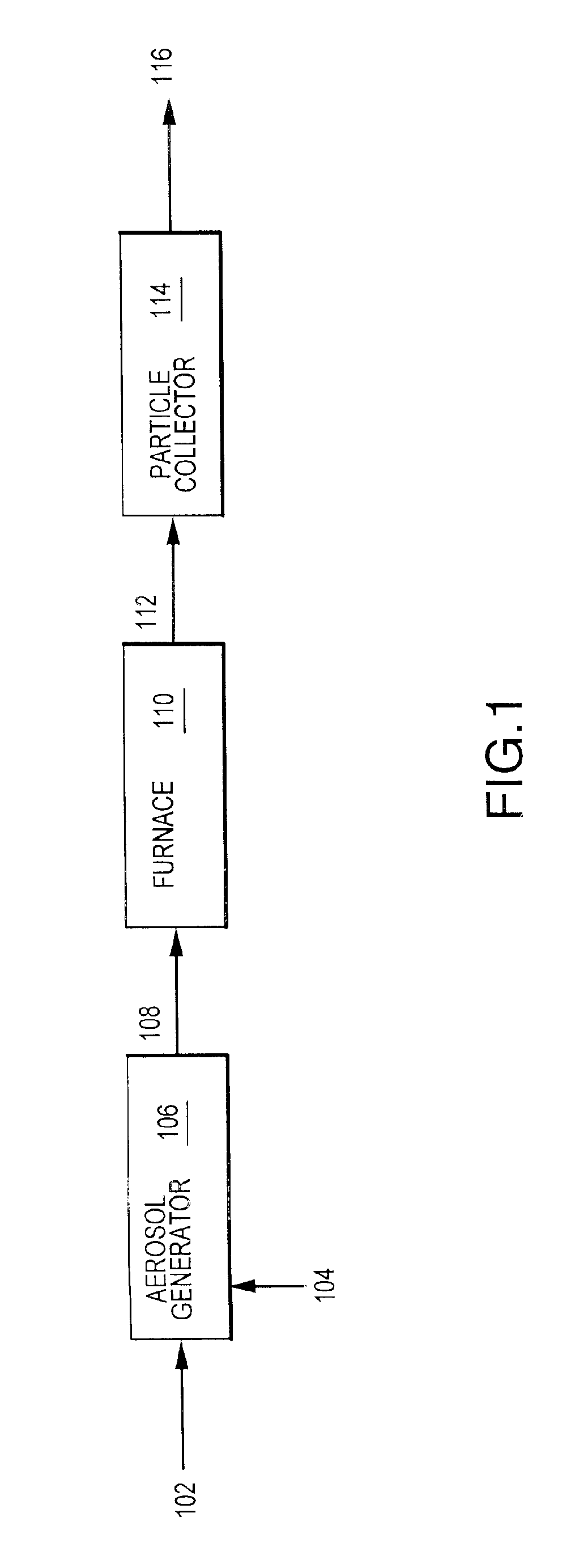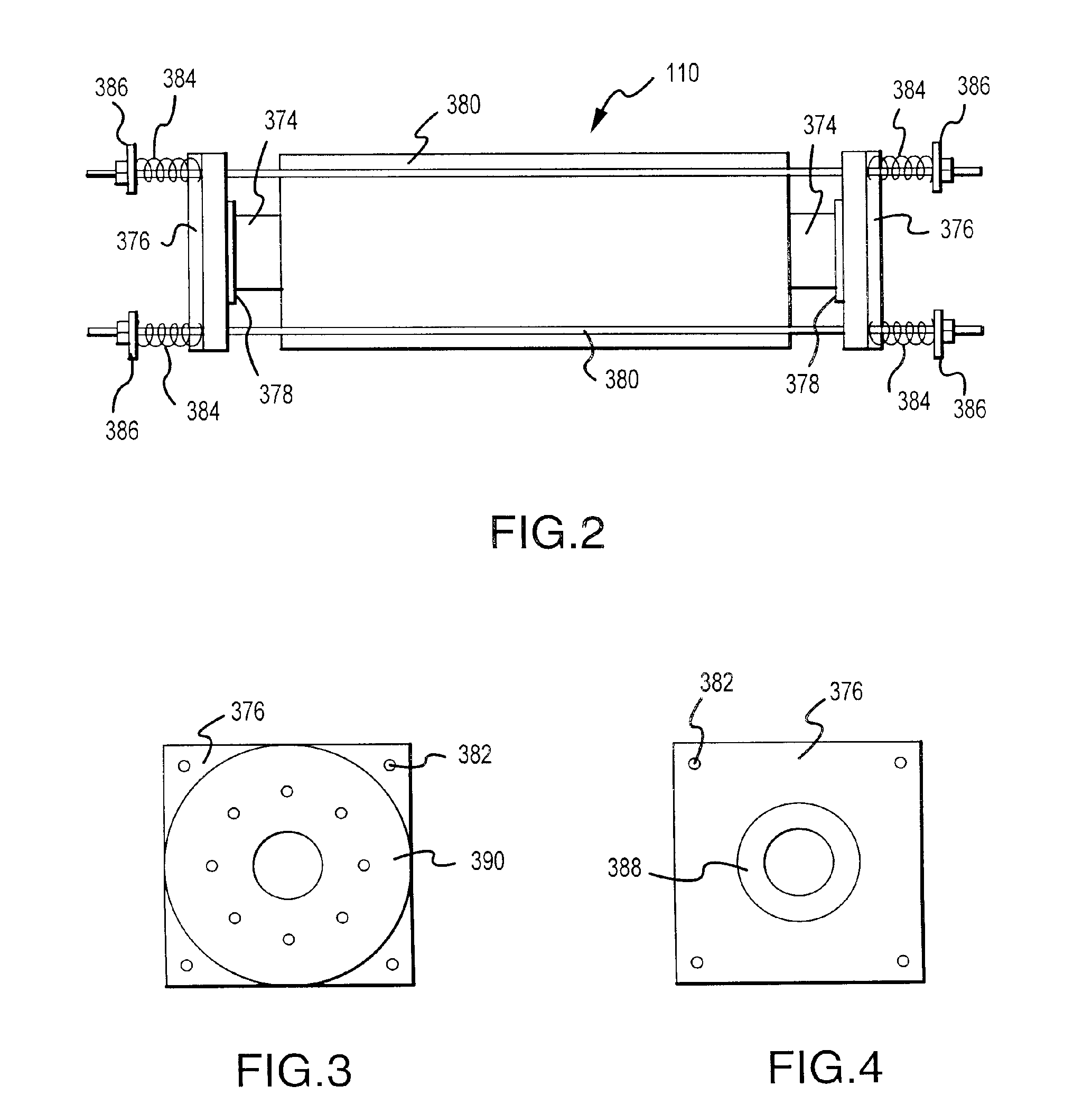Coated nickel-containing powders, methods and apparatus for producing such powders and devices fabricated from same
a nickel-containing powder and nickel-containing technology, which is applied in the field of nickel-containing powders, can solve the problems of destroying the electrical properties of metals, increasing the fabrication cost of such devices, and relatively expensive noble metals, and achieves high crystallinity
- Summary
- Abstract
- Description
- Claims
- Application Information
AI Technical Summary
Benefits of technology
Problems solved by technology
Method used
Image
Examples
examples
[0290] A number of examples were prepared in accordance with the various embodiments of the present invention. Examples 1-5 are summarized in Table 1.
TABLE INickel Metal ExamplesREACTIONSAM-PRECURSORTEM-PLESOLUTIONCARRIER GASIMPACTORPERATURE10.5 M2 lpm N2No1000° C.Ni(NO3)25 lpm 7% H2 / N2(net 5% H2)20.5 M2 lpm N2yes1000° C.Ni(NO3)25 lpm 7% H2 / N2(8.5 μm(net 5% H2)cutoff)30.5 M2 lpm N2no 700° C.Ni(NO3)25 lpm 7% H2 / N2(net 5% H2)40.5 M5% H2 / N2no 850° C.Ni(NO3)25Ni(NO3)2 and2 lpm N2No1000° C.Pd(NO3)25 lpm 7% H2 / N2(net 5% H2)SAM-AVERAGE95% SIZEPOWDERSURFACEPLEPARTICLE SIZEDISTRIBUTIONDENSITYAREA11.2 μm0.4-2.5 μm7.13 g / cc2.4 m2 / g(80%)20.8 μm0.4-1.2 μm7.80 g / cc1.1 m2 / g(88%)31.8 μm0.4-3.5 μm—41.5 μm0.4-3.0 μm—5———
[0291] For each of Examples 1-5, an aqueous solution of 0.5 M Ni(NO3)2-6H2O was formed and an ultrasonic transducer generator operating at a frequency of about 1.6 MHz was utilized to produce an aerosol of liquid droplets from the solution. Nitrogen and hydrogen were used as a carri...
PUM
| Property | Measurement | Unit |
|---|---|---|
| thickness | aaaaa | aaaaa |
| thickness | aaaaa | aaaaa |
| thickness | aaaaa | aaaaa |
Abstract
Description
Claims
Application Information
 Login to View More
Login to View More - R&D
- Intellectual Property
- Life Sciences
- Materials
- Tech Scout
- Unparalleled Data Quality
- Higher Quality Content
- 60% Fewer Hallucinations
Browse by: Latest US Patents, China's latest patents, Technical Efficacy Thesaurus, Application Domain, Technology Topic, Popular Technical Reports.
© 2025 PatSnap. All rights reserved.Legal|Privacy policy|Modern Slavery Act Transparency Statement|Sitemap|About US| Contact US: help@patsnap.com



